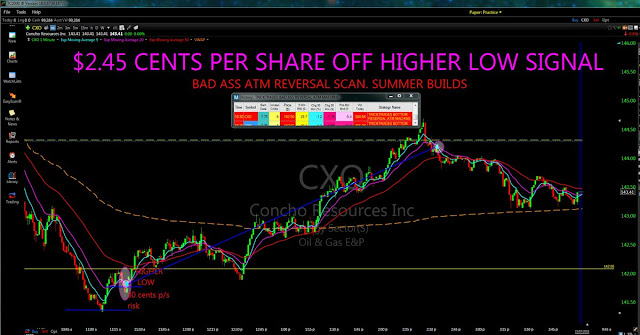LOW RISK HIGH REWARD - TEXT VERSION 2
On August eleven, 2011, there's a chance to open a brief position close to the robust resistance shaped by sure support and resistance indicators. we will set an inexpensive stop loss order at the recent low of August four and five around one.4060 for a most loss of seventy pips.
Strong resistance is made by a mix of another support / resistance indicators that all converge round the one.4410 area, however we’d like a additional conservative profit target below the price of August nine around one.4340.
Do we have a 3:1 RRR? affirmative.
Here’s the math:
Enter August eleven, 2011 at 1.4130
Stop loss order set at August four low of 1.4060
Maximum loss seventy pips zero.0070
======
Profit-taking exit via sell stop order 1.4340
August eleven entry via obtain limit order 1.4130
Planned gain 210 pips 3 times planned loss 0.0210
======
If we have a tendency to’re wrong we lose seventy pips. If we have a tendency to’re right we profit 210 pips.
Once we discover charts with 3:1 RRR, (or appear to own that setup forming within the predictable future), we then:
Place entry limit orders to open positions close to support. Remember, for long positions, support is close to the doubtless low for a given amount, and for brief positions support is close to the doubtless high. we have a tendency to enter close to support as a result of the chances of value moving against USA ar lower, and if support is broken and our stop loss is hit, we have a tendency to exit whereas our losses ar little.
Place exit limit orders (for taking profits) close to resistance. For long positions resistance is close to the doubtless high, and for brief positions it’s close to the doubtless low.
Once the trade is dead, we have a tendency to place a stop loss order that’s no afar from our entry purpose than 1/3rd the space in pips from our entry purpose to our planned exit close to resistance. That ensures that our losses shouldn’t be over 1/3rd of our gains on winning trades.
How to place entry, exit, and stop loss orders may be a massive topic by itself, that we’ll cowl in a very lesson later.
You must perceive that so as to use this strategy, you would like to be sensible at distinctive robust support and resistance points. the rationale to limit ourselves to mercantilism solely these varieties of setups is that we will be wrong most of the time and still be terribly profitable.
Here’s a mathematics example that illustrates however, by taking solely trades that supply 3:1 RRRs, we will be wrong most of the time and still be terribly profitable.
1.You have $20,000 in mercantilism capital.
2.You will use conservative risk management rules (discussed later during this course), and set your stop loss shut enough to your entry purpose in order that you are doing not risk over one to three % of that $20,000 on any given trade, during this case, 1% or $200.
In alternative words, your stop loss won’t be over $200 in pips off from your entry purpose, therefore your most loss is $200.
3.You place ten trades with a stop loss that risks no over $200 on the average, therefore your total capital risked over those ten trades is $2,000. even though you lose ten straight trades, which may happen, you’d still have $18,000 or ninety % of your capital.
INSTRUCTOR'S NOTES
This lesson aims to elucidate the logic of the reward to risk quantitative relation in mercantilism, occurring to stipulate the principle “Every monger ought to opt for a risk / reward quantitative relation he feels comfy with.”
The reward to risk quantitative relation may be a easy idea. If a trade’s stop loss is fifty pips and its profit target is one hundred fifty pips, its reward to risk quantitative relation is 150:50 i.e. 3:1. The trade aims for a profit 3 times as massive as its risk.
It might sound somewhat confusing to mention that each monger ought to opt for a bequest to risk quantitative relation they feel comfy with (the words reward and risk ar typically used interchangeably, don't worry because the principle is that the same). we'd like to elucidate a touch concerning the character of the Forex market before this may be.
It is a widely known principle of all speculative monetary markets that there ar a disproportionately sizable amount of big moves up and down. this implies that in Forex, the best thanks to build the foremost profit over an extended amount of your time is to aim for atiny low quantity of big winners, rather than aiming for an oversized quantity of little winners. However, this could involve loads of psychological discomfort, and an honest cash management strategy for addressing the inevitable losing streaks becomes essential, as change of integrity winners becomes less attainable.
It is up to the individual monger to make a decision whether or not he or she's going to aim to win most of their trades with little profits, or instead select a lower win rate however aim for higher profit targets. Over longer periods of your time the uppe




0 comments:
Post a Comment